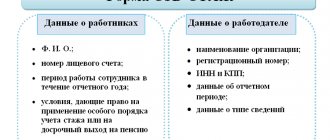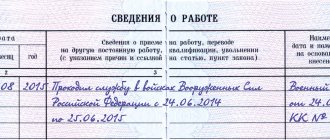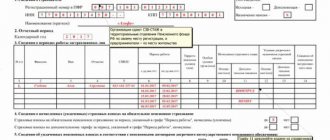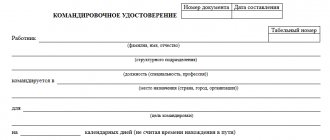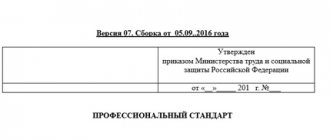Posted On 06/08/2018
Pension laws have changed, but people remain. And they stayed - with thoughts about their future retirement. In order to satisfy the interest of the general public, we have begun a series of articles about the new pension reform. And today we will touch on the topic of preferential pensions for medical workers in Russia. What changes have occurred? Will the right of medical workers to a preferential calculation of their insurance pension be preserved under the new rules? What length of experience will be counted as “medical”? Is it profitable to go to work in a village? etc.
Without further ado, let's get started.
Categories of health workers entitled to early retirement
So, Law No. 400-FZ of December 28, 2013, regulating the pension provision of Russians, included in a separate chapter provisions on the preservation of benefits for special categories of workers. Thus, according to paragraph 20 of Article 30 of the above-mentioned legislative act, healthcare workers still have the right to early retirement.
How early can such an exit be?
Unlike some other preferential categories, doctors are not tied to a specific age. For medical workers, the main requirement to ensure the right to receive a preferential pension is length of service, position and place of work.
Minimum period of work for early retirement for:
- workers of healthcare institutions located in villages or urban-type settlements (urban-type settlements) must be 25 years old;
- workers of healthcare institutions located in the city - 30 years;
- employees of healthcare institutions with mixed work experience (both in rural areas and in cities) - 30 years.
https://youtu.be/zaUxW42_BNI
Cancellation of long-service pension
The legislation of the Russian Federation, which was in force from the collapse of the USSR until 2001, established several basic criteria when teaching employees with 25 years of general experience in educational institutions received the right to early registration of pension benefits. This included length of service, position as a citizen, and place of work. The age reached by the teacher at the time of receiving the opportunity to apply for a pension did not play a role.
After 2001 (until 2020), certain innovations were introduced into the legislation governing the establishment of preferential payments to teachers. This included:
- changing long-service compensation benefits to a preferential age pension;
- clarification of the concept of 25 years of teaching experience (intervals of study and military service are excluded);
- introduction of the principle of choice (continuation of work or retirement);
- regulation of the pension amount by the presence of contributions to specialized funds;
- The list of persons enjoying such benefits has been clarified.
At the same time, the general principle of using the concept of “length of service,” although it has undergone external changes, still remains in the normative field. The legislator left for teachers the possibility of receiving a pension earlier than that established for ordinary citizens.
Remember, the long-service pension for teaching staff has not been abolished, but has been replaced by the possibility of preferential retirement upon reaching a certain age.
Criteria for "preferential"
The state establishes these “certain positions” and “certain places of work” in the relevant regulations. Anyone can familiarize themselves with them in Decree of the Government of Russia No. 781 of October 29, 2002.
The general criteria for “preferentiality” are:
- the organizational and legal form of a healthcare enterprise cannot be other than an “institution”;
- the name of the enterprise must contain the words specified in Resolution No. 781, for example: “hospital”, “hospital”, “medical hospital”. part", "orphanage" and others;
- if a medical worker carried out his activities not in a healthcare enterprise, but in medical structural divisions of individual organizations, then this activity is counted towards the “preferential length of service” on a general basis. For example, such organizations may include: clinics at medical universities, sanitary units, laboratories at military units, military institutes, etc. (for more details, see clause 6 of the Rules for calculating the periods of work of doctors of Resolution No. 781).
- the position held by an individual medical employee must be listed in the relevant list of Resolution No. 781.
Preferential length of service for teaching staff in 2020
The current methodology for calculating teaching experience will be relevant until 2030. Further, the preferential length of service will be canceled and pension provision will be possible only on a general basis.
Find out how the pension reform will affect you and your work: taking into account the Presidential amendments of August 29, 2020. From 18 cards you will learn what the essence of pension reform is, what your colleagues are afraid of and how to cope with these fears. And also - what rumors are circulating and whether you need to believe them and how to correctly answer three “sore” questions from employees about pensions.
In 2020, to be eligible for early retirement, a teacher must work for 25 years. This experience can be with one employer or with several. It doesn't matter, just like continuity.
Also read about when the court will not allow dismissal for absenteeism, how to detain an employee who wants to quit and how to return the money you spent on an apartment.
The following periods are also included in the preferential educational experience:
- being on sick leave;
- annual regular or additional leave;
- parental leave for children up to 1.5 and 3 years;
- training or advanced training in a specialized specialty (if the employee worked in the specialty both before and after training).
The rules for calculating length of service do not depend on whether the teacher worked in a private educational institution or a public school. The calculation method is based only on legislative acts in force at the time of work, even if they are not in force now.
Principles for calculating length of service
We have already briefly mentioned the rules by which the duration of medical activity is calculated - they are all listed in the same Resolution No. 781. However, we will help you figure out what’s what.
So, the “preferential length of service” includes the full 25 or 30 years of service in a preferential position, including mixed ones (part of the service in the village, part in the city). If an employee changes jobs several times during his working career, then all “grace periods” are considered and confirmed.
Each “preferential” year of work in the city is counted towards the total length of service in a 1:1 ratio. That is, for one year of work - one year of service. But village employees have the right to relief. They receive “preferential seniority” in a ratio of 1:1.25. In other words, for each working year - one year and three months of service.
Also, at an accelerated pace, the length of service goes to medical workers - surgeons, anesthesiologists, forensic experts, pathologists and other health care workers from the corresponding list (see the same Resolution). They are credited with 1.5 years of service per year of work.
An important point: during the “preferential period”, starting from November 1, 1999, only full rates are taken. Until this date, all places of work are included in the length of service, regardless of the rate. Afterwards - only complete ones or complete ones obtained by addition. For example, if a health worker worked in two “preferential places” at the same time, in each at half the rate.
If you are applying for a preferential pension for a medical worker, you need to come to the Pension Fund of the Russian Federation in advance, about six months to a year before your expected retirement, with your passport, work record book and SNILS. An employee of the Pension Fund of Russia will review the documents you brought and tell you what else is needed to calculate the preferential pension for a health worker. The procedure for checking, confirming and crediting work experience is not a quick process, so you need to prepare for the fact that you will most likely have to prove your right to benefits.
By the way, keep in mind that the benefit only applies during retirement. They do not affect the size in any way and do not increase it.
We hope that we were useful to you. All the best!
What is not included in the teaching experience
In certain situations, production will not be counted towards the total amount of experience. This includes situations where a citizen held a position not listed above or was employed in an organization that did not allow early retirement.
Then the accrual of experience does not occur. However, it is worth saying that there are some exceptions to this rule. This is due to the fact that it is necessary to take into account not only the positions enshrined in the above government act.
These could also be teaching positions that have already been abolished . For example, those that took place in the Soviet Union. In addition, these are the positions that were in organizations before 2002. For example, a pioneer leader.
Also, this period will not include the time during which the person studied at an educational institution. This rule does not apply when, prior to this training, the person has already started working in the field of education. Then it is also taken into account that after training the citizen must work in the specified field.
Attention! When a person begins to study immediately after school, this time will not be included in the development. There is also another limitation associated with this production. It cannot include periods during which a person cared for a child. Similar rules apply to situations where a citizen worked part-time. This applies when the second job is not related to the teaching field.
Then only those intervals described in the resolution are taken into account.
Preferential pension for medical workers - list of positions
In support of the applicant’s claims, the staffing table in force during the disputed period was used, indicating the merger of two specialized departments - the “operating unit” and the “anesthesiology-resuscitation” department into one, the order of the chief physician of the hospital to bring the names of the hospital departments in accordance with the requirements of the law, the regulation on department, job responsibilities of an anesthesiologist-resuscitator.
Doctor B. applied to the Pension Fund for early assignment of an old-age labor pension. The disputed period is the period of work in the City Clinical Hospital from December 3, 1998. to 10/06/2000 (which is 1 year 10 months 3 days) as head of the HBO department (hyperbolic oxygenation). This period of work of the Pension Fund State Administration is excluded from the special experience completely due to the discrepancy between the job title.
The applicant's claims are supported by the following:
— Order of the Ministry of Health of the Russian Federation dated February 24, 1998. No. 48 “On remuneration of healthcare workers in the Russian Federation.” The note to Appendix No. 4 of the above order stipulates that the title of the position of “manager” of a structural unit is supplemented by the name of the specialty provided for in the nomenclature of medical specialties, for which the employee has appropriate training and the work for which is included in the scope of his duties and the Order of the Ministry of Health of the Russian Federation dated October 15, 1999 No. 377 “On approval of the Regulations on remuneration of healthcare workers.”
According to the staffing table for 1997, 1999, 2000, in the City Clinical Hospital, in the hyperbaric oxygenation department, one position was provided for the head of the department - a general practitioner. This position was occupied by doctor B.
The above claims are currently in the courts of general jurisdiction to resolve the differences on the merits.
Features of early retirement provision for medical workers
What do the numbers with asterisks mean after listing professions and institutions in the list of persons engaged in teaching activities? Maybe just on the list of positions...teacher; Senior Lecturer; educator; *1.a.1.9) these numbers mean something, but I don’t understand!?
Russia and Turkmenistan are parties to the multilateral Agreement on guarantees of the rights of citizens of the CIS member states in the field of pensions dated March 13, 1992. Pension provision for citizens who arrived in the Russian Federation, including from Turkmenistan, is carried out in the manner prescribed by this Agreement.
For example, a teacher completed the required work experience in March 2020, which means he will be able to apply for a preferential pension in September 2019. And if an employee accumulates the required length of service in 2022, then he will be able to retire only 4 years later, in 2026.
In order for the length of service/insurance to be counted as a preferential period, it is necessary that your activities are included in those regulated by law. There are approved lists of positions and educational institutions that are counted towards preferential length of service. If your position/educational institution is not there, then nothing can be done here.
The portal administration is not responsible for all actions of portal users that give rise to corresponding rights and obligations for the latter. 3. The provision of legal advice may be refused to a portal visitor at any time without explaining the reasons for the refusal.
In order for your work to be included in the preferential length of service, the positions and places of work you occupy must comply with the list approved by the Government of the Russian Federation. Cm.
N 447 “On approval of the List of professions and positions of employees of theaters and other theatrical and entertainment enterprises and groups, whose creative work gives the right to a pension for long service”, applying the provisions of paragraph 2 of this resolution.
The section “Name of Institutions” of the List specifies, in relation to pension provision, the concept of “institution for children”, which is not disclosed in the above-mentioned federal laws, thereby ensuring the realization of the right of citizens to early pension provision.
The first basis for granting early retirement
Early pensions for medical workers are assigned earlier than the generally established retirement age for work in harmful or difficult working conditions in accordance with Lists No. 1 and No. 2:
List No. 1 of industries, jobs, professions, positions and indicators in underground work, in work with especially harmful and especially difficult working conditions, employment in which gives the right to an old-age pension on preferential terms, was approved by a resolution of the Cabinet of Ministers of the USSR dated January 26, 1991 No. 10;
List No. 2 of industries, jobs, professions, positions and indicators with harmful and difficult working conditions, employment in which gives the right to an old-age pension on preferential terms, was approved by Resolution of the USSR Cabinet of Ministers of January 26, 1991 No. 10.
If the medical workers indicated in List No. 1 and List No. 2 have worked in the listed jobs for at least half of the established period and have the required duration of insurance coverage, they are assigned a labor pension with a reduction in the generally established retirement age in proportion to the length of service available in the relevant types of work (see tables, respectively) .
For your information:
When assigning a pension for work in harmful and difficult working conditions, the criteria and categories are established by Section XIX “Healthcare Institutions” of List No. 1 and Section XXIV “Healthcare and Social Security Institutions” of List No. 2.
Reducing the retirement age of persons who worked on List No. 1
Experience in underground work, work in hazardous working conditions and in hot shops (List No. 1) Retirement age
men women
| At least 3 years 9 months | — | 52 years old |
| 4 years | — | 51 years old |
| 5 years | 55 years | 50 years |
| 6 years | 54 years old | 49 years old |
| 7 years | 53 years old | 48 years old |
| 7 years and 6 months | — | 45 years |
| 8 years | 52 years old | — |
| 9 years | 51 years old | — |
| 10 years | 50 years | — |
Reducing the retirement age of persons who worked on List No. 2
Work experience in difficult working conditions (List No. 2) Retirement age
men women
| At least 5 years | — | 53 years old |
| 6 years | — | 52 years old |
| At least 6 years 3 months | 58 years old | 52 years old |
| At least 7 years 6 months | 57 years old | 52 years old |
| 8 years | 57 years old | 52 years old |
| 9 years | 57 years old | 51 years old |
| At least 10 years | 56 years old | 50 years |
| 11 years | 56 years old | — |
| 12 years | 56 years old | — |
| At least 12 years 6 months | 55 years | — |
Preferential length of service for teaching staff in 2020
The current methodology for calculating teaching experience will be relevant until 2030. Further, the preferential length of service will be canceled and pension provision will be possible only on a general basis.
Find out how the pension reform will affect you and your work: taking into account the Presidential amendments of August 29, 2020. From 18 cards you will learn what the essence of pension reform is, what your colleagues are afraid of and how to cope with these fears. And also - what rumors are circulating and whether you need to believe them and how to correctly answer three “sore” questions from employees about pensions.
In 2020, to be eligible for early retirement, a teacher must work for 25 years. This experience can be with one employer or with several. It doesn't matter, just like continuity.
Home news When, due to an error on the title page, the work book becomes invalid
Topic of the issue: What provisions should, can and cannot be included in the PVTR
Also read about how to get a missing employee and when you can refuse an employee who has changed his mind about quitting
The following periods are also included in the preferential educational experience:
- being on sick leave;
- annual regular or additional leave;
- parental leave for children up to 1.5 and 3 years;
- training or advanced training in a specialized specialty (if the employee worked in the specialty both before and after training).
The rules for calculating length of service do not depend on whether the teacher worked in a private educational institution or a public school. The calculation method is based only on legislative acts in force at the time of work, even if they are not in force now.
The second basis for granting early retirement
An early labor pension in connection with medical activities may be established for persons who carried out medical and other activities to protect the health of the population, regardless of age, if they have at least 25 years of work experience in healthcare institutions, if such work throughout their entire career was carried out only in rural areas and urban-type settlements, or at least 30 years, if the work was carried out only in cities or there is “mixed” experience, i.e.
e. in cities, rural areas and urban settlements.
Decree of the Government of the Russian Federation dated October 29, 2002 No. 781 approved the List of positions and institutions in which work gives the right to early retirement, as well as the Rules for calculating length of service in the relevant types of work.
At the same time, periods of work only in those positions and institutions that are provided for in the List are counted towards the length of service that gives the right to early pension provision.
Exit conditions
Considering that at the legislative level an exhaustive list of conditions has been defined that are the basis for granting early retirement to teaching staff, this point should not be missed. This included the following positions:
- A worker is required to work in the educational field for 25 years or more. Years of study will not be counted in this interval.
- The position of a teacher should be among the positions that are eligible for early retirement.
- During the period of work of the teaching worker, the administration transferred in full the insurance contributions due to him to the pension fund, including time of illness and temporary disability.
- For female teachers who went on maternity leave after 2000, only one and a half years of maternity leave will be taken into account. At the same time, if such leave was provided before 2000, then it will be included in the length of service in full.
Remember, when, due to the inconsistency of certain documents that were in force during the time of teaching, in particular, canceled periods of study, military service, maternity leave (when leaving was carried out according to one rules, and leaving according to others), the truth will have to be restored through the courts.





